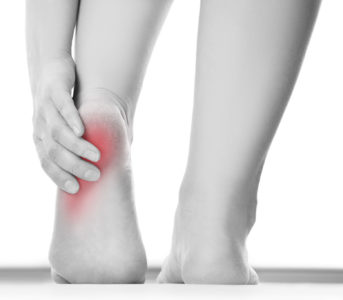 One of if not the most common question we get in the comments section goes something like this – “Hey Dr. Silverman, the other day I jumped off a deck/fell off a ladder and landed hard on my feet. My heels were the first thing to hit the ground, and now I’m in pain with every step I take. What’s going on in my feet, and how can I fix it?”
One of if not the most common question we get in the comments section goes something like this – “Hey Dr. Silverman, the other day I jumped off a deck/fell off a ladder and landed hard on my feet. My heels were the first thing to hit the ground, and now I’m in pain with every step I take. What’s going on in my feet, and how can I fix it?”
As we tell each patient that we consult online, it’s best to get a diagnosis from a specialist in your area, but it may be a good idea to head into a clinic for x-rays because a number of different issues could be going on. At a minimum, you’re probably dealing with what’s known as a heel or stone bruise. As we described in this post on identifying and treating heel bruises, the fat pad on the underside of the heel can be damaged after hard trauma to the heel. It can lead to a contused, partially disrupted or completely disrupted fat pad.
The good news is that heel bruises and fat pad disruptions typically heal well with conservative care techniques. This means treatments like rest, ice, compression and elevation. Anti-inflammatory pain relievers can also help provide relief. One of the most important things about treating a heel bruise is that you give your feet enough time to heal. If you try to rush back into activity too quickly, you’re only going to be stressing your heel with every step you take, and it’s never going to heal properly. Athletes are notoriously bad at rushing back too quickly following a heel bruise, but try to find other ways to exercise that still allows your feet to avoid activity.
Calcaneal Fracture Treatment
If you suffer severe enough trauma, the calcaneus, or heel bone, can actually fracture. Things get a little trickier if you’re dealing with a calcaneal fracture because non-operative treatment has some downfalls. Without surgery, your heel can widen, poor healing can negatively affect your peroneal tendon, arthritis and joint stiffness can develop or fibula disruption can occur. That’s why we talked about the problem with avoiding surgery if you have a calcaneal fracture.
For most calcaneal fractures, surgery is the preferred treatment route. Surgery to address the fracture has three main goals:
- Fuse the fracture to prevent arthritis
- Narrow the heel to reduce peroneal tendon disruption
- Adjusting the fracture and joint to ensure proper healing
This is a difficult procedure that takes precise work from a skilled surgeon, but it’s one of Dr. Silverman’s favorite procedures to perform. Getting the fracture to heal in just the right location is rewarding for both patient and provider. Rehab after surgery follows the same path of a heel bruise in that RICE and slowly returning to activity are your best courses of action.